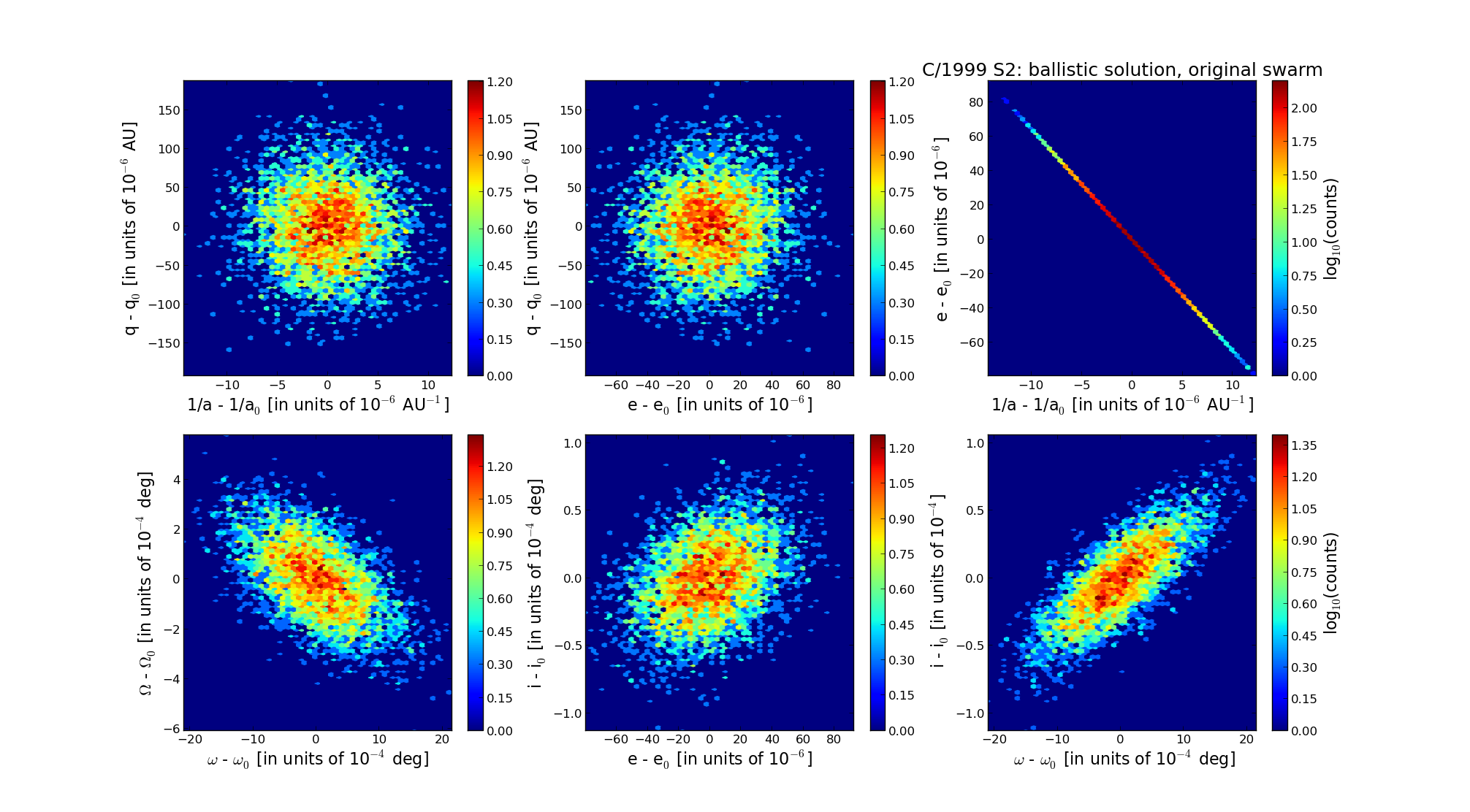| Solar System Dynamics & Planetology Group |
 |
C/1999 S2 McNaught–Watson |  |
| Solar System Dynamics & Planetology Group |
 |
C/1999 S2 McNaught–Watson |  |
| number of observations | 98 |
| number of residuals | 184 |
| data interval | 1999 Sep. 19 — 2002 Feb. 16 |
| rms [arcsec] | 0.48 |
| orbit quality class | 1a |
| Epoch (TT) | 19971108.0 | = JD 2450760.5 |
| time of perihelion passage (TT) | 19971122.532219 | ± 0.006487 |
| perihelion distance | 6.46669745 | ± 0.00004864 |
| eccentricity | 1.00725540 | ± 0.00002471 |
| argument of perihelion [deg] | 223.477051 | ± 0.000614 |
| longitude of the ascending node [deg] | 74.427229 | ± 0.000142 |
| inclination [deg] | 65.813130 | ± 0.000028 |
| inverse semimajor axis [10-6 au-1] | -1121.96 | ± 3.82 |

| Epoch (TT) | 16890725 | |
| time of perihelion passage (TT) | 19971122.443555 | ± 0.006530 |
| perihelion distance | 6.46202592 | ± 0.00004912 |
| eccentricity | 0.99963528 | ± 0.00002453 |
| argument of perihelion [deg] | 223.496648 | ± 0.000617 |
| longitude of the ascending node [deg] | 74.396105 | ± 0.000142 |
| inclination [deg] | 65.872236 | ± 0.000027 |
| inverse semimajor axis [10-6 au-1] | 56.44 | ± 3.80 |
| Epoch (TT) | 23011006 | |
| time of perihelion passage (TT) | 19971121.877189 | ± 0.006539 |
| perihelion distance | 6.46116610 | ± 0.00004892 |
| eccentricity | 1.00207639 | ± 0.00002446 |
| argument of perihelion [deg] | 223.382735 | ± 0.000623 |
| longitude of the ascending node [deg] | 74.395135 | ± 0.000142 |
| inclination [deg] | 65.865297 | ± 0.000028 |
| inverse semimajor axis [10-6 au-1] | -321.37 | ± 3.79 |